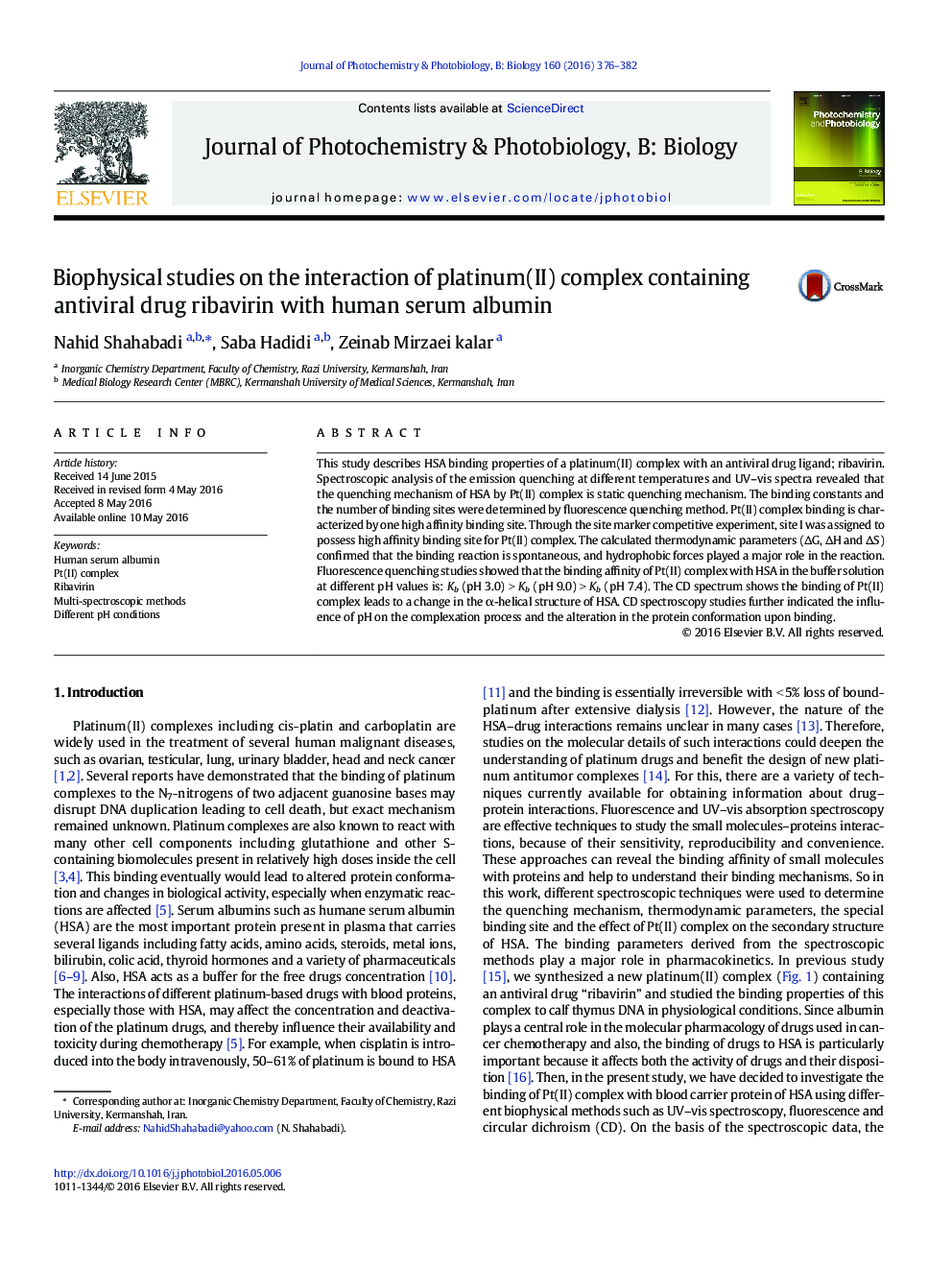| Article ID | Journal | Published Year | Pages | File Type |
|---|---|---|---|---|
| 29600 | Journal of Photochemistry and Photobiology B: Biology | 2016 | 7 Pages |
•Competitive experiment revealed that site I of Native-HSA is the binding location for Pt(II) complex.•According to thermodynamic data hydrophobic force plays a major role in the interaction process.•Binding affinity of Pt(II) complex to F isomer (pH 3.0) is stronger than N (pH 7.4) and B (pH 9.0) isomers.
This study describes HSA binding properties of a platinum(II) complex with an antiviral drug ligand; ribavirin. Spectroscopic analysis of the emission quenching at different temperatures and UV–vis spectra revealed that the quenching mechanism of HSA by Pt(II) complex is static quenching mechanism. The binding constants and the number of binding sites were determined by fluorescence quenching method. Pt(II) complex binding is characterized by one high affinity binding site. Through the site marker competitive experiment, site I was assigned to possess high affinity binding site for Pt(II) complex. The calculated thermodynamic parameters (ΔG, ΔH and ΔS) confirmed that the binding reaction is spontaneous, and hydrophobic forces played a major role in the reaction. Fluorescence quenching studies showed that the binding affinity of Pt(II) complex with HSA in the buffer solution at different pH values is: Kb (pH 3.0) > Kb (pH 9.0) > Kb (pH 7.4). The CD spectrum shows the binding of Pt(II) complex leads to a change in the α-helical structure of HSA. CD spectroscopy studies further indicated the influence of pH on the complexation process and the alteration in the protein conformation upon binding.
Graphical AbstractFigure optionsDownload full-size imageDownload as PowerPoint slide
